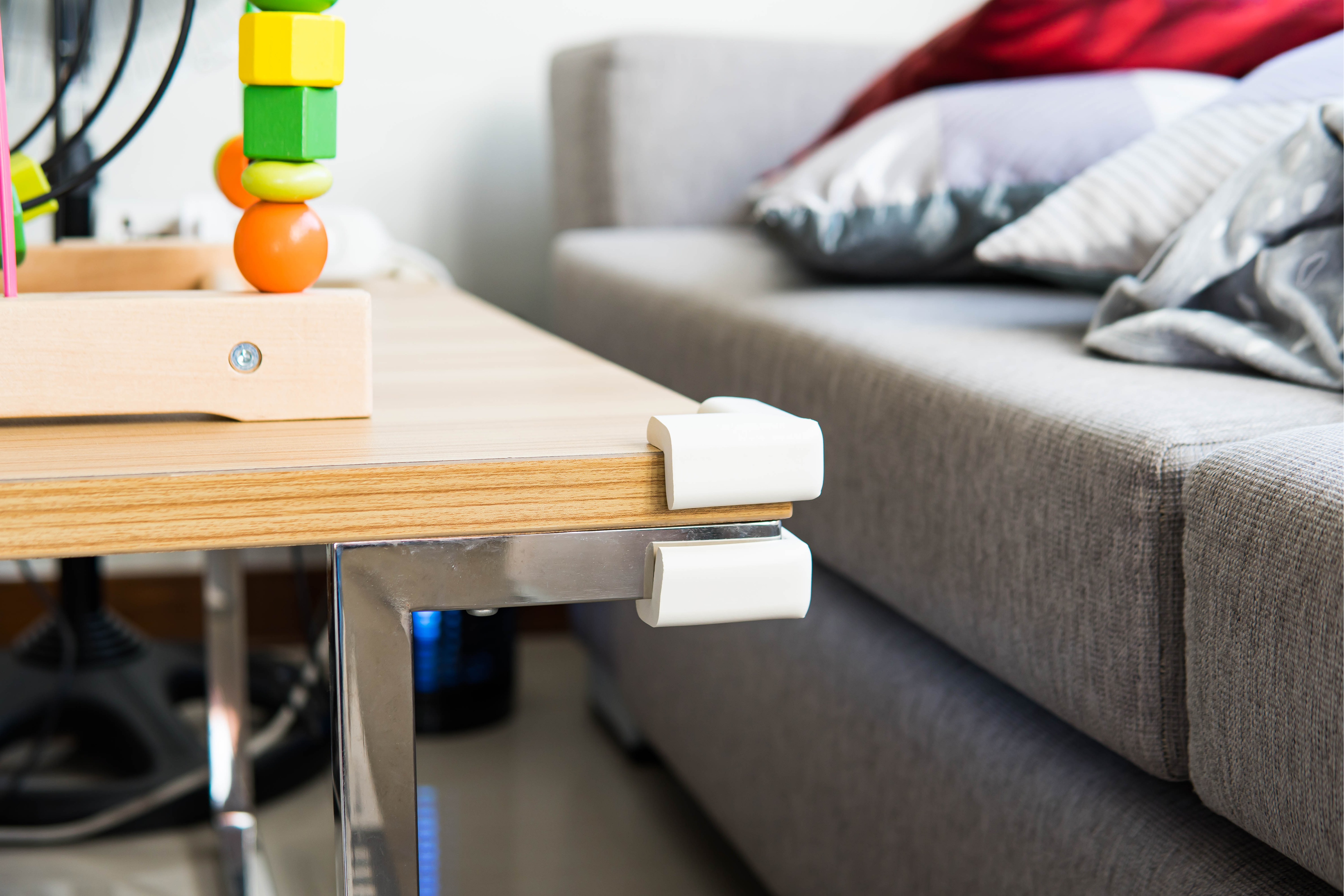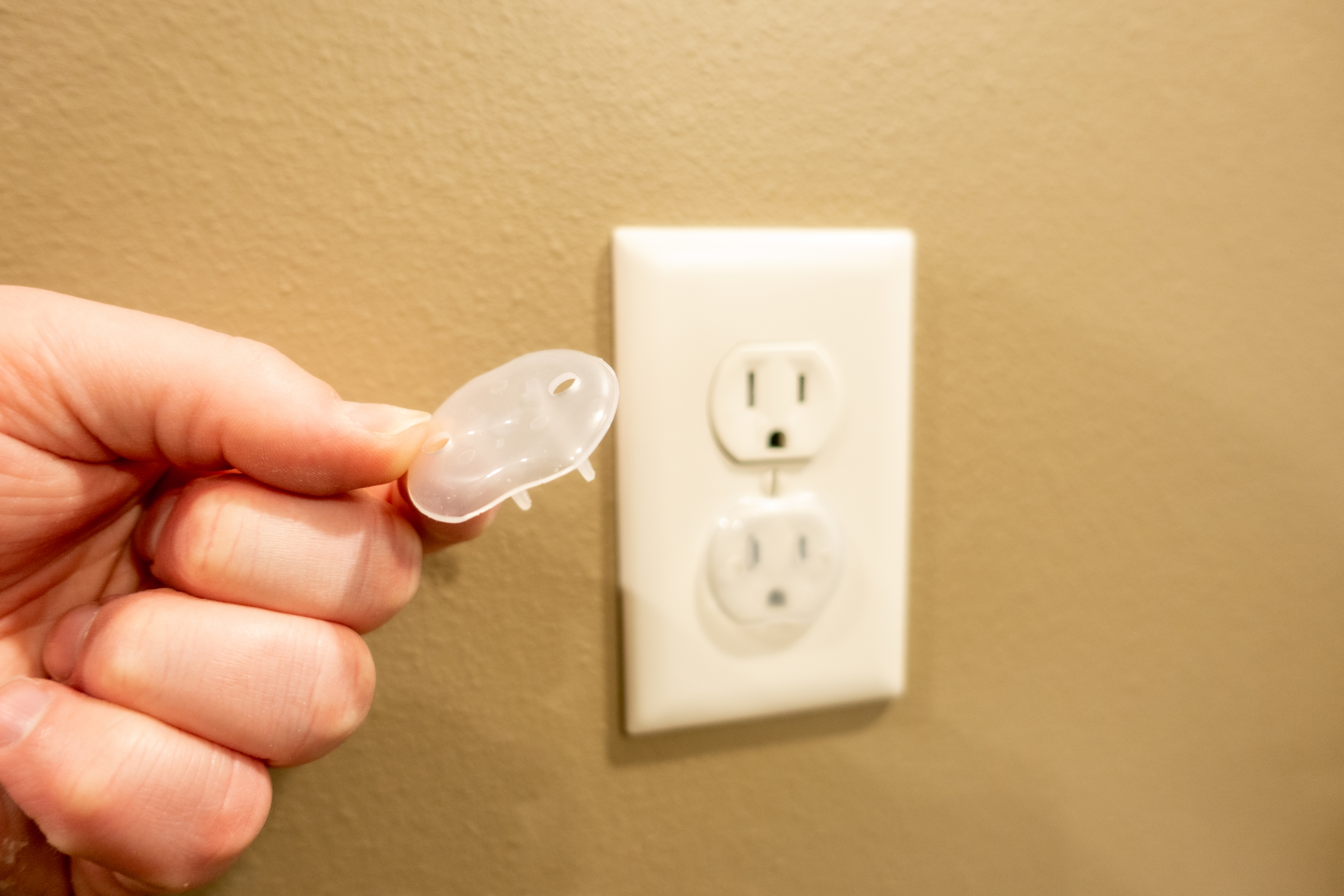Blogs
How To Baby Proof The House - All Hacks Simplified

Babyproofing is a method of preparing the places like the house, cars, and cribs to prevent your baby from unintentional injuries and self-harming situations.
The everyday things, normal for adults, like corners of furniture, glass items, doors, drawers, can become a hazard once the babies start crawling and learn to pull, walk, climb.
You might also be tempted to delay babyproofing, thinking that the baby is not even rolling and you still have time. But before you know it, you are running behind them to stop them from getting hurt.
Why Do You Need To Babyproof Your House?

Most parents must have heard the elders say that babyproofing is a western world idea. While we do not imply that the elders are wrong, however, the changes in the lifestyle in the past few decades has made babyproofing a requisite.
In earlier times, there was space in houses and many people to look after babies in joint families, while the others completed their chores. Now, when most parents are working, families are nuclear, and there aren't specific people to watch the baby, making babyproofing an absolute necessity. Even if a parent is not working, there are times when the baby cannot be watched over and requires set-up to prevent any mishap.
Here are some points to keep in mind while deciding to babyproof your house and keep your little ones safe.
1. Analyze everything from the POV (Point of View) of a baby.
2. Every corner can hurt, every piece of loose furniture can fall, any drawer could have items that might hurt them, and no cap/cork is too tight for the babies to open.
3. Water, toiletries, plastic bags, medicines, cutting tools, step-up stools, ladders, gas stove knobs can be dangerous to babies and toddlers.
4. Stairs, balconies, windows and doors are to be closed properly, and proper stoppers are to be used to prevent them from closing on the kids suddenly.
5. Toys given to children should always be age-appropriate, so they do not suffocate or swallow them in curiosity.
Here is the list that will need babyproofing, to say the least.
Movable furniture
All the furniture should be anchored to the floor and fixed to avoid toppling over the little ones, such as TV cabinets, wheeled tables or chairs, rickety chest of drawers etc. Children should not be left unattended in rooms with heavy furniture. There are many options available such as furniture straps that help stabilizes the pieces of furniture. Also, any appliances that are sitting on any movable piece of furniture should be attached to the wall (For Example - TV, music systems).
Edges
Most injuries are caused by the edges or walls, tables, beds. Edge guards and bumpers for all items and sizes are available easily. They cover any sharp corners which the crawling babies or running toddlers might accidentally hit. Crawl or sit at the height of your child to see what they might run into and hurt themselves. TIP - start babyproofing with edges and bed/crib proofing first, these are the first need as soon as your baby starts to turn over and crawl at 3 to 4 months of age.
Bathrooms

Bathrooms report the most serious accidents in toddlers and babies. Never leave the baby unattended in the bathroom even for a second, especially when using a bathtub. Adjust the maximum temperature of the water heater at 48 degrees Celcius to avoid accidental burns. Bathtub bottoms and bathroom floor should be covered with antislip mats, and plumbing should be covered with rubber covers to prevent slipping and related injuries. Shower curtains are an absolute no-no with small kids. Toilet seats should be shut tight with latches as they pose a threat of falling and ingesting contaminated water. Above all, keep the bathroom and toilet doors closed and secured with babyproof latches at all times when not in use.
Cabinets
All cabinets with openable doors, sliding doors, open shelves, drawers should be sealed safely with cabinet door latches. This is an easier option than removing and segregating things from all the cabinets in the house. Cabinets assigned to cutlery, crockery, wires and appliances, chemicals, shoes that have apparent hazards should be kept under the lock at all times. Drawers need to be secured because they can be used to climb on the pieces of furniture. TIP - It will also save you from unnecessary efforts of cleaning afterwards!
Beds/Cribs
Whether you co-sleep with your baby or use a crib, both situations need specific proofing to prevent the baby or toddler from falling and injuring themselves. The Cribs should not have electric ports, hanging curtains, peeling paint, windows or anything near that have even remote chances of hurting them. Avoid stuffing the crib with too many soft toys, pillows or blankets as rolling and entangling in them can cause choking in kids. If you are co-sleeping or Sharing beds, make the babies sleep on the side of the bed to avoid the risk of SIDS or suffocation in the mattress. The side of the beds can be safeguarded by bed rails available in the market. TIP - Place blankets or rugs around the bed or crib on the floor so avoid accidental falling and hurting, because these little ones can make surprising superman moves in their sleep!
Electric Ports and Appliances

All electric ports should be covered with safety sockets. Cords, battery-operated electronic appliances such as trimmers or shavers should be kept away from reach at all times. The baby proofing safety plugs are tight enough so that the kids cannot remove them. The kids will surely try to plug-in sockets if they get a chance as it will fascinate them, and they see you as adults doing it. Open wiring or cables should be tied and taped to the wall or concealed if possible. TIP - Always carry safety plugs when you go out and use them when needed to reduce your stress.
Stairs/windows
Metal railings and gates have been a boon and a revolution in babyproofing techniques. Sturdy and safe, they eliminate the chasing and anxiety or mini heart-attack you get when you see your baby crawling or trying to explore stairs. The stair gates need to be installed at both ends to prevent climbing up/down both. To avoid putting too many rails, you can isolate some floors and not take the baby to that floor at all. Similarly, windows need to be babyproofed with special window latches and temporary grills, especially those easy to reach. Windows also need to be proofed with soft pads to avoid finger-snapping due to accidental closing. TIP - Place all movable items like walkers, tricycles on the ground floor to avoid accidents.
Medicine and Toxic Material
Medicines and toxic materials filled in bottles tubes are super attractive for babies and toddlers. Naturally, they are drawn towards these items out of curiosity, and how much you try, no cork or screw or bottle cap is too tight to prevent them from opening it. Therefore, removing these items from their reach is the only option. Never let these items left loose and an unattended baby around. Always secure medicine or toxic items away in latched cabinets and cupboards closed with babyproof latches. TIP - It will be easier to reposition the medicine/ chemicals/ toxic material at out-of-reach cabinets until the kids grow up, as you wouldn't want to risk poisoning in case someone forgets to put back the latch, or the latch breaks open, or the kids somehow find their way through the safety locks.
Kitchen and tableware
The kitchen usually becomes a playground for kids with a huge collection of utensils and kitchenware. It is paramount to keep heavy items like mortar and pestle, knives, scissors, cutters in drawers that can be locked or at a height out of their reach. It is advised to change the side of gas knobs if possible. If it is not possible, make sure the main switch for gas is shut down after the use every time because the toddlers can reach them and turn them on. Remove table cloths, especially when the toddlers are learning to stand and walk. They may use the cloth as support, and the aftermath could seriously injure them. TIP - High chairs for kids is recommended as it saves dinner table mess and breaking of crockery.
Does baby proofing make my baby completely safe?
No. No babyproofing can guarantee 100% safety and assurance that nothing will hurt your child. Baby proofing is about consciously eliminating apparent dangers that can cause serious harm. In fact, your baby learns about protecting themselves when they get hurt, it is a part of their cognitive and sensory development. But we are talking about bruising the knee or arm. Babyproofing saves from serious injuries calling for hospital visits.
Baby proofing does not mean spending a fortune and getting everything at once. Plan as soon as your baby arrives and choose what is required. There are options in all price range available in the market, so keep your budgets in check without worrying.
We suggest whenever you are working in the house, especially if you are alone with baby, make a playpen for them so they can play in that pen till you complete your chores, without you having to lose your mind every time you hear a noise somewhere in the house (or maybe too much silence and no noise from your baby)
Ask away from our parent and expert community your questions about babyproofing. Make it a fun activity to do with your partner for your baby and create memories for the same!
For much more than just parenting download our app
Love this blog? Share it with other parents.





